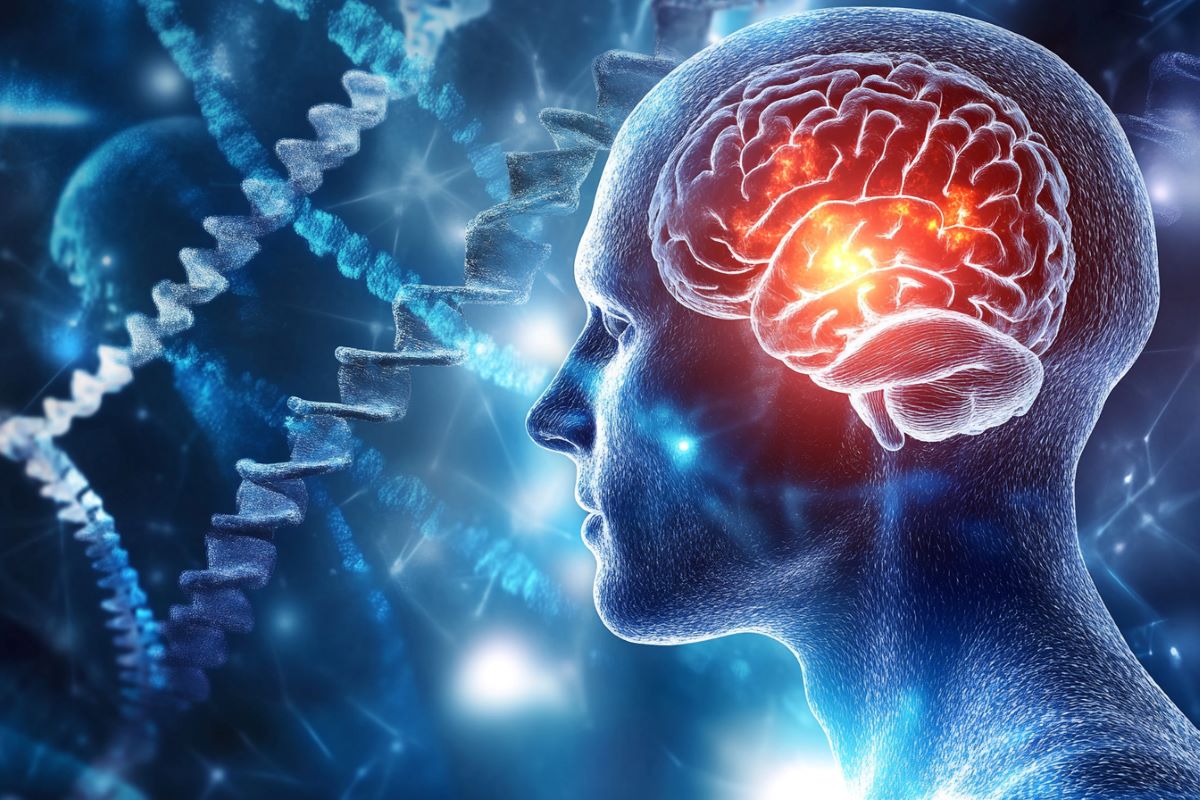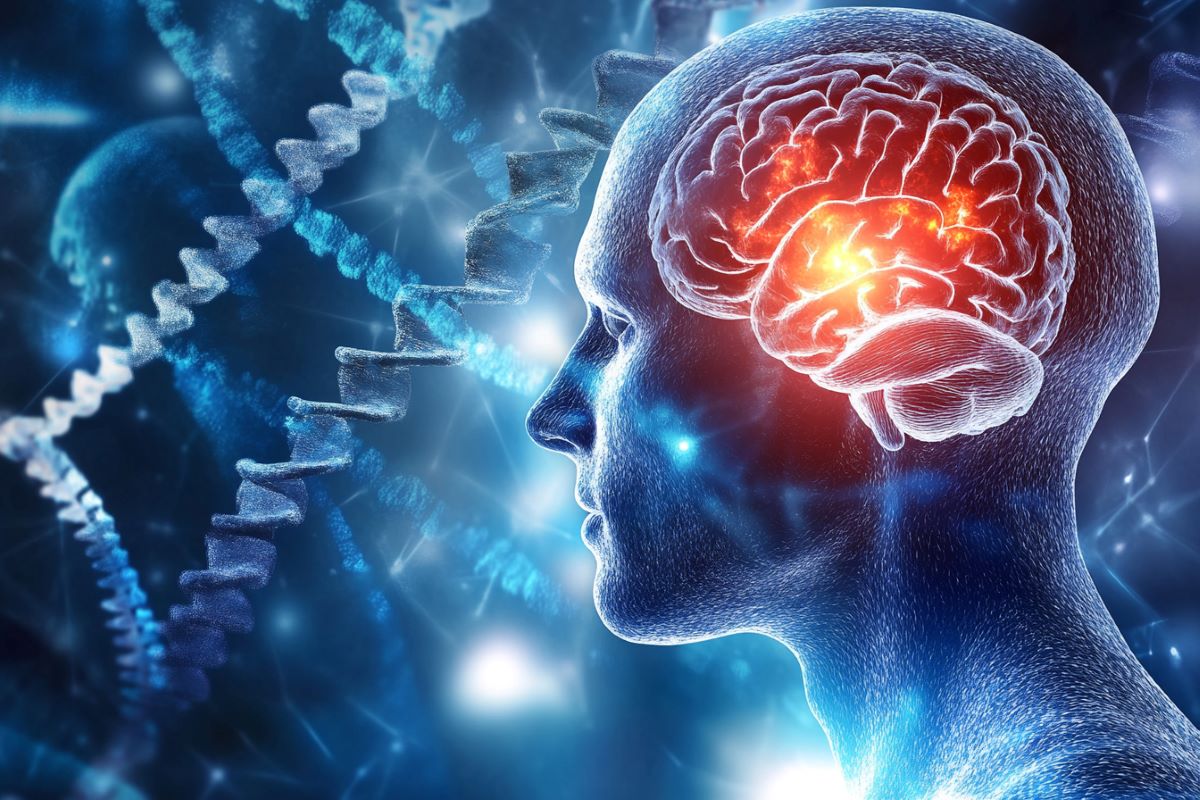
Summary: A recent study has discovered a unique genetic mutation present in two individuals diagnosed with schizophrenia, which has been linked to heightened schizophrenia-like behaviors observed in mice. This mutation results in increased levels of glycine decarboxylase (GLDC), an enzyme that breaks down glycine, consequently diminishing NMDA receptor activation.
Experiments showed that mice with additional copies of the GLDC gene displayed behaviors characteristic of schizophrenia, affirming the gene’s involvement in this mental disorder. Comprehensive brain analyses revealed a significant reduction in glycine levels within a specific brain region, which disrupted neural signaling pathways.
Key Insights:
- Genetic Association: Increased GLDC gene copies were linked to schizophrenia-like behaviors in mice.
- Brain Function Disruption: The identified mutation led to decreased glycine levels in crucial areas of the brain, adversely affecting NMDA receptor functionality.
- Neural Consequences: There were notable reductions in synaptic activity and deficits in brain functions related to learning.
Source: University of Illinois
A groundbreaking study from the University of Illinois Urbana-Champaign, in collaboration with researchers from Massachusetts and Germany, has established a rare genetic correlation to psychosis found in schizophrenia patients.
The identified genetic mutation elevates glycine decarboxylase (GLDC) levels, an important enzyme that regulates glycine’s presence in the brain. Glycine plays a crucial role in activating NMDA receptors that respond to the neurotransmitter glutamate.

“The genetic basis of schizophrenia is exceedingly intricate, and it is uncommon for mutations in patients to be directly linked to the disorder,” commented Uwe Rudolph, a professor in comparative biosciences at Illinois.
“Currently, schizophrenia is diagnosed clinically based on symptoms rather than through laboratory tests or imaging. Our research aims to explore rare mutations that may lead to a better understanding of significant biochemical and physiological pathways.”
The investigation initiated when a team at McLean Hospital in Belmont, Massachusetts, identified a genetic mutation in two schizophrenia patients, revealing multiple copies of a DNA segment encompassing the GLDC gene. Intrigued by the potential connection to their symptoms, the team reached out to Rudolph’s laboratory to develop a line of mice replicating the mutation.
The genetically modified mice displayed behavioral traits similar to those observed in the human patients diagnosed with schizophrenia.
To refine the understanding of the genetic link, researchers created mouse lines with additional copies of a few genes from the larger chromosome segment found in the patients, eventually isolating the GLDC gene. “Our findings showed that the mere presence of extra GLDC gene copies was enough to elicit the schizophrenia-like behaviors we noted,” shared Rudolph, who is also affiliated with the Neuroscience Program and the Carl R. Woese Institute for Genomic Biology.
To ascertain why excess GLDC gene copies led to behavioral issues, the researchers conducted further analyses focusing on glycine levels and NMDA receptor functionality in the mice’s brains.
“We proposed that multiple copies of GLDC would cause decreased glycine levels in the brain due to its role in glycine degradation, thus insufficient glycine would be available for NDMA receptor activation,” explained Maltesh Kambali, a postdoctoral researcher at Illinois and lead author of the study.
Despite measuring an increased activity of the GLDC enzyme, the team initially found no significant difference in glycine levels between the GLDC-overexpressing mice and healthy counterparts. Consequently, they collaborated with German researchers who employed advanced techniques for glycine tracking in the brain.
The German group’s findings revealed that, although total glycine levels in the brain were comparable, the availability of glycine outside of nerve cells—critical for activating NDMA receptors—was markedly lower in a specific region of the hippocampus of the mice with surplus GLDC.
To investigate why this region was particularly impacted, Rudolph’s team partnered with researchers from Harvard Medical School to conduct functional assessments of the hippocampal subregion known as the dentate gyrus.
They identified reduced activity in neural synapses, the junctions transmitting signals between neurons, and differences in long-term potentiation (LTP), a mechanism essential for learning.
“Our measurements of glycine levels and long-term potentiation indicated overlapping changes within the dentate gyrus, unlike other hippocampal regions. This observation resonates with theories linking psychosis development to dentate gyrus activity,” remarked Kambali.
Subsequent biochemical analyses of the dentate gyrus in mice with excess GLDC confirmed that previously implicated pathways associated with schizophrenia exhibited diminished activity, further corroborating that increased GLDC and decreased glycine effectively impair NMDA receptor function, contributing to the observed schizophrenia symptoms.
The research results were published in the journal Molecular Psychiatry.
“This study illustrates the multifaceted role of GLDC as a new regulator of NMDA receptors,” said Rudolph.
“Dysfunction of NMDA receptors is recognized as significant in the pathophysiology of schizophrenia. Furthermore, this finding is pertinent beyond the disease context, as NMDA receptors are crucial for numerous brain functions, particularly learning and memory.”
This research received support from various institutions, including the National Institutes of Health and the Shervert Frazier Research Institute at McLean Hospital, among others.
Funding Acknowledgment:
This research was supported by numerous National Institutes of Health grants.
About This Research on Schizophrenia and Genetics
Author: Liz Ahlberg Touchstone
Source: University of Illinois
Contact: Liz Ahlberg Touchstone – University of Illinois
Image: Image credit goes to Neuroscience News
Original Research: Closed access.
“An increased copy number of glycine decarboxylase (GLDC) associated with psychosis reduces extracellular glycine and impairs NMDA receptor function” by Uwe Rudolph et al. Molecular Psychiatry
Abstract:
Glycine is a vital co-agonist at NMDA receptors in the brain, particularly within the dentate gyrus, which is linked to the development of psychotic thoughts and memories. Current clinical trials are exploring drugs that can modulate glycine levels to enhance cognitive function in schizophrenia patients. However, the precise significance of regulating glycine metabolism through intrinsic enzymes remains uncertain.
Utilizing a chromosome-engineered mouse model, our findings indicate that a triplication of the gene encoding glycine decarboxylase (GLDC)—as identified in patients with psychosis—reduces extracellular glycine levels in the dentate gyrus and hampers long-term potentiation in specific synapses while reducing the activity of biochemical pathways implicated in schizophrenia. Furthermore, this model demonstrates deficits in behaviors linked to schizophrenia, such as prepulse inhibition and sociability.
These insights highlight GLDC’s role as a negative regulator of long-term synaptic plasticity in mice, suggesting that increased GLDC copy numbers may indeed contribute to psychotic development in humans.









